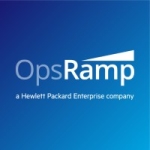The two major use cases were alerts for events and scheduling of engineers to get pages based on incidents.
Alert deduplication and noise reduction for alerts are the major features that I found useful.
It is a very non-customizable product, so you cannot add things like root cause analysis or the classification of incidents based on the area where you are getting more incidents. For example, if you're getting a lot of database issues, that may be an are you want to probe.
There aren't any capabilities to integrate with any problem management issues, like repetitive or high impact issues to deep dive and track them in the PagerDuty system. That is, I would like to see integration of problem management with incident management. That would be one nice feature to have.
It's scalable. We had 120 users.
We used Evanios and switched to PagerDuty because deduplication of the alerts was not occurring in Evanios.
The initial setup was not very difficult. It took us about four months to set it up because we were trying to make PagerDuty fit to the best possible use cases that we had. We also had quite a number of alerts to move.
I'd rate the initial setup process at three out of five.
Set your objectives and have a plan regarding your goals, timelines, and what you want to achieve. Figure these out in terms of the implementation of the tool and whether your objectives will be met by the tool.
Overall, I give PagerDuty a rating of eight on a scale from one to ten.






















